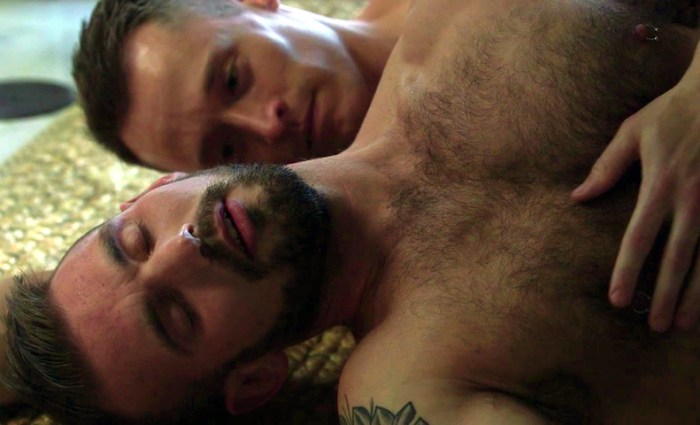Representation of sexual relations and/or intimacy in pornographic media is often filled with unrealistic and exacerbated depictions of actors, their bodies and physical setting leading to the construction of delusory expectations by audiences on what sex actually entails. It is mainly the portrayal of women in pornographic media which has attracted the ire of feminists during the sexual revolution of 1970s and 80s in U.S.A. Famously known as “Porn Wars”, the debate on pornography divided the opinion of feminist thinkers into two opposing groups.
On one hand there were radical-libertarian feminists who urged women to use pornography to overcome their fears about sex, to arouse sexual desires and to generate sexual fantasies. These feminists claimed that women should feel free to view and enjoy all forms of pornography including violent pornography. According to this group of feminists, there is a difference between an actual rape and a rape fantasy. While the anti-porn lobby was led by Andrea Dworkin and Catherine Mackinnon who stressed that there is no difference between gender discrimination against women in boardroom and sexual objectification of women in bedroom. They argued that pornography is nothing more than patriarchal propaganda about women’s “proper” role as man’s servant, caretaker and plaything. They insisted it encouraged men to behave in sexually harmful ways towards women and demeans women to passively accept sexual abuse. However, this camp believed that pleasure is inherently patriarchal, asymmetrically and violent in nature.
To challenge this narrative, the last decade has seen the rise in ‘feminist porn, or porn created in a way that considers the rights, pleasure and consent of all the people involved-on and off screen. Feminist porn is not exclusively made for women, but it is a form of porn that takes women’s pleasure into account as much as men. It’s a porn that sees women in leading roles: initiating sex and going after what and who they want. Feminist pornographers also make sure actors, crew and directors are paid well, have safe working conditions and that everyone has consented to the sex taking place.
Parallel to heterosexual or pornography catering to cis-gender men, queer pornographic media (predominantly by and for cis-gender white men) also emerged. Though in theory queer erotica has the power to subvert heteronormative narratives on desire, fantasies and relations, in reality it has fallen prey to same subjectivities which has guided ‘mainstream and popular’ pornographic industry.
Pleasure in gay pornographic media is largely centred on a limited understanding of intimacy and sexual relations between people. Like its straight counterpart, gay pornography is filmed around cliches of anal sex, oral sex and size of genitals (with an underpinning of bigger the better). Gay pornography seldom deals with emotions, stigma, fear, that queer individuals deal on a daily basis in order to form a relation.
However, to bridge this gap and create a counter narrative for pornography, Davey Wavey, a YouTuber, in 2017 created Himeros.tv, a porn platform that “enhances gay and bisexual men’s experience of sex and sexuality through connection, exploration, and pleasure”. Himeros.tv creates videos with sex coaches, sexologists, tantric coaches, and adult film stars. Wavey in an interview to US based ‘The Advocate’ magazine said, “We don’t market it as educational porn or porn that’s good for you, but it kind of is. It’s porn, that when you watch it, you see either a technique that’s being demonstrated or a concept that you feel like you can apply to your life. As gay men in a vacuum of sex education, we learned about sex by doing what? Watching porn.”

Similar to websites like Himeors.tv, OnlyFans platform has also gained popularity in recent years. OnlyFans is a website where anyone can upload their intimate photos or videos which could be accessed through a monthly subscription. This single platform has revolutionized how porn is created and consumed. It allowed the creators to bypass adult media giants who control the narrative on filming which is highly misogynistic and queer-disconnecting. It also provides with an opportunity for individuals to work on their own terms and set multidimensional picture of beauty. Pornographic industry has been criticized for paying less remuneration to female and queer performers.
OnlyFans has created a space where people are redefining the meaning of ‘porn’, through a medium where creators and audiences are not just engaged in sexual activity devoid of emotions and intimacy but tries to build a connection as many creators share about their personal ups and downs. However, OnlyFans is not free from pornographic stereotypes, many creators still adhere to them in order to drive traffic on their websites.
Challenging the singularity of pornographic media is crucial in changing the discourse around it, which mainly focuses on religious morality, women’s patriarchal modesty with a single solution of banning it. However, bans on pornographic media reinforces the idea that pleasure is vulgar and obscene, and sexuality could only be expressed in form of reproductive duty under the sanctum of marriage. Moreover bans do not reduce child pornography, revenge porn or uploading someone’s intimate life without their consent. Instead of banning porn regulating it would help to curb these problems.

